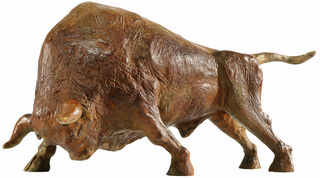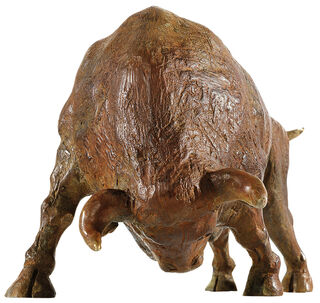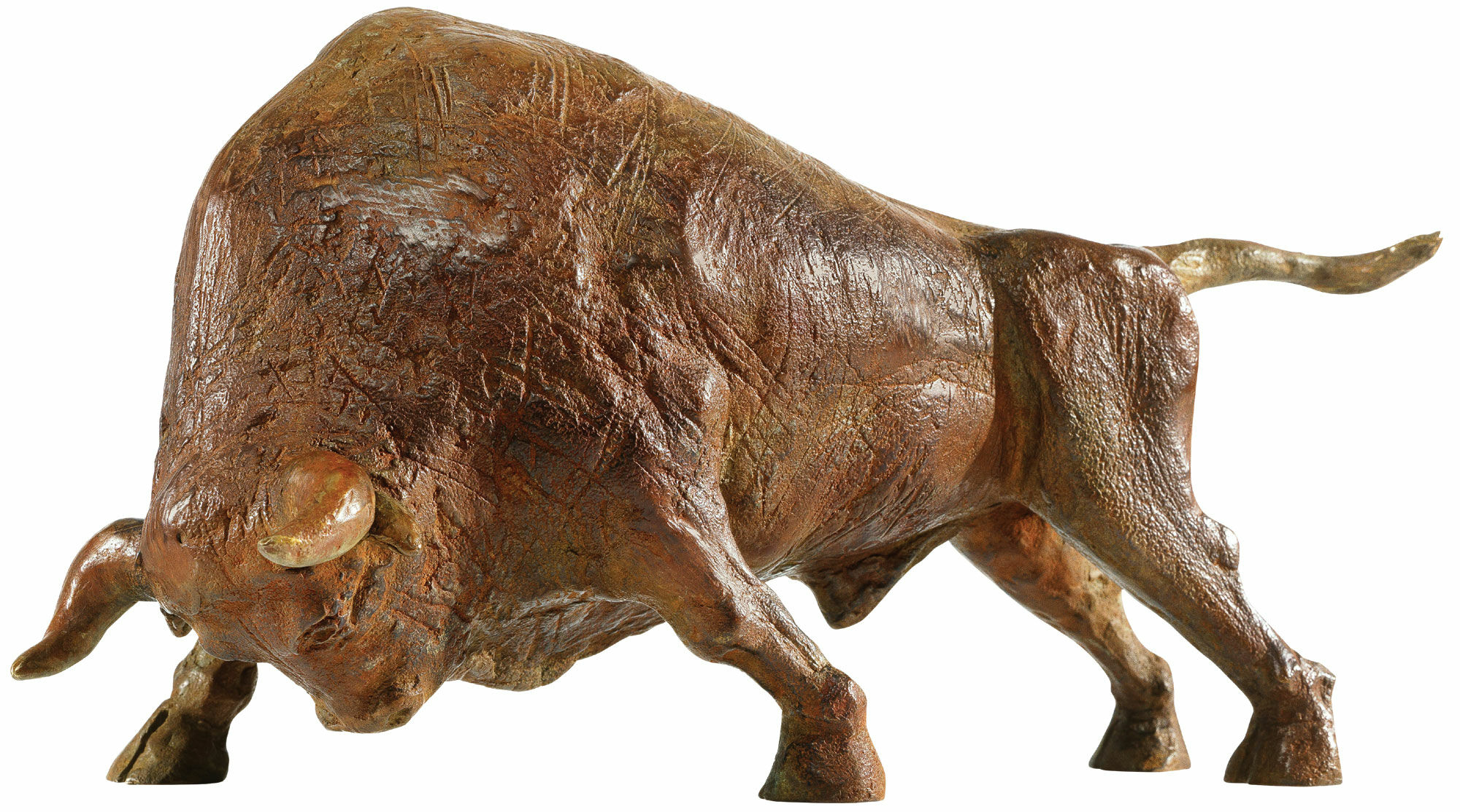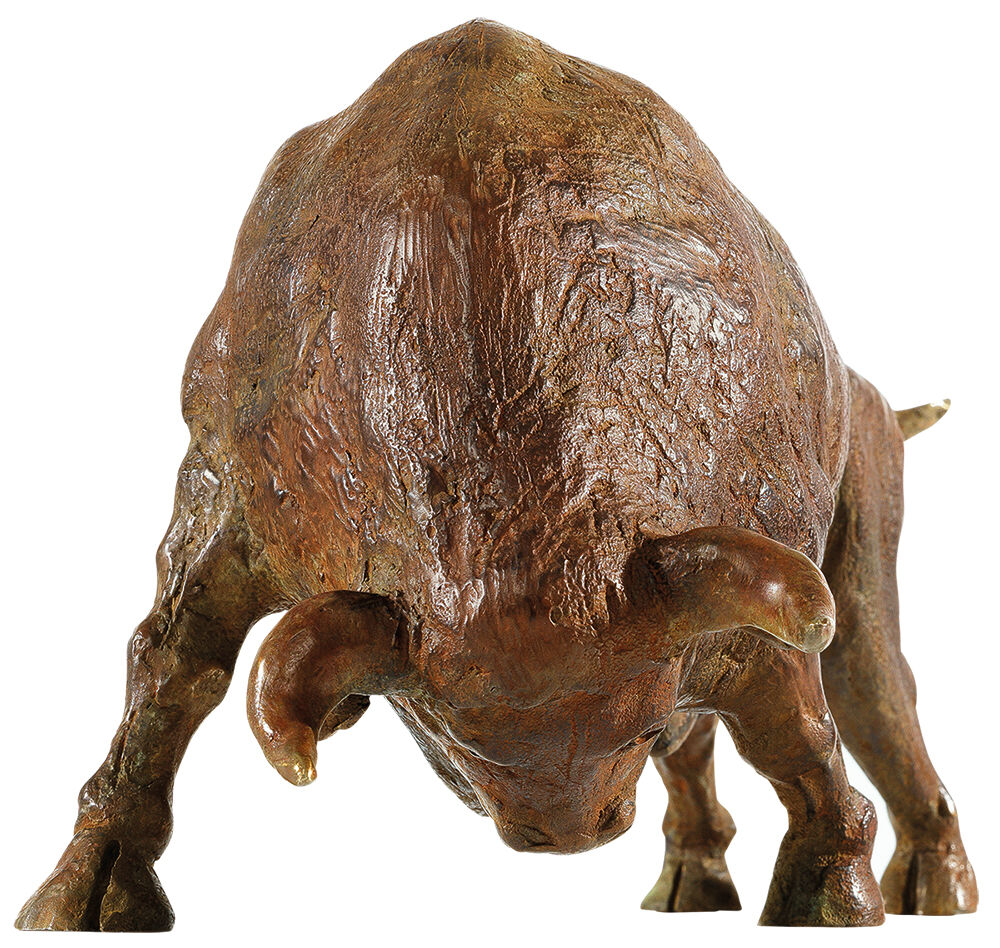Sculpture "Bull", bronze
Sculpture "Bull", bronze
Quick info
limited, 199 copies | numbered | signed | hallmarked | bronze | patinated | polished | size 19 x 35 x 14 cm (h/w/d) | weight 3.7 kg
Detailed description
Sculpture "Bull", bronze
Power and passion: Mader's bull
Hans-Peter Mader has been fascinated by the power and passion of the bull ever since he attended a bullfight in Madrid. For several years now, Mader has been sculpting bulls in bronze, each time alienating the bull, which "in terms of its habitus is more reminiscent of a 'boring cow with horns', into a dynamic powerhouse."
His bull combines the nimble lightness and the dynamic force of the model; it is both an image and an analytical study of the geometry of his physique.
Edition in bronze. Cast using the Lost-Wax-Process, patinated and polished by hand. Limited edition of 199 copies. Numbered, signed and hallmarked with the foundry stamp. Size 19 x 35 x 14 cm (h/w/d). Weight 3.7 kg.
About Hans-Peter Mader
1951-2021
Hans-Peter Mader was creatively active in many artistic fields. After graduating from the University of Architecture and Building in Weimar, the studied architect concentrated on the artistic side of this discipline: initially as an assistant and seminar leader in the corresponding department of his university, where he ensured the basic artistic training of the following generation of students. However, at the same time, he continued his own studies: sculpture and ceramics at the Berlin Weißensee School of Art.
Mader has been a freelance ceramist and sculptor since 1989. Since then, he has also worked as a restorer and landscape designer - he seemed to be attracted by whatever can be creatively shaped in some way. His focus continued to be on sculpture. In Mader's studio in Hohenfelden near Weimar in Germany, he created sculptures that have already been presented in more than 150 national and international exhibitions.
An alloy of copper with other metals (especially with tin) used since ancient times.
When casting bronze, the artist usually applies the lost-wax technique which is dating back more than 5000 years. It's the best, but also the most complex method of producing sculptures.
First, the artist forms a model of his sculpture. It is embedded in a liquid silicone rubber mass. Once the material has solidified, the model is cut out. The liquid wax is poured into the negative mould. After cooling down, the wax cast is removed from the mould, provided with sprues and dipped into ceramic mass. The ceramic mass is hardened in a kiln, whereby the wax flows out (lost mould).
Now we finally have the negative form, into which the 1400° C hot molten bronze is poured. After the bronze had cooled down, the ceramic shell is broken off and the sculpture is revealed.
Now the sprues are removed, the surfaces are polished, patinated and numbered by the artist himself or, to his specifications, by a specialist. Thus, each casting becomes an original work.
For lower-quality bronze castings, the sand casting method is often used which, however, does not achieve the results of a more complex lost-wax technique in terms of surface characteristics and quality.
Term for an art object (sculpture, installation), which is produced in multiple copies in a limited and numbered edition according to the artist‘s will.
Artist's multiples have been called the most accessible and affordable art on the market.
A plastic work of sculptural art made of wood, stone, ivory, bronze or other metals.
While sculptures from wood, ivory or stone are made directly from the block of material, in bronze casting a working model is prepared at first. Usually, it is made of clay or other easily mouldable materials.
The prime time of sculpture after the Greek and Roman antiquity was the Renaissance. Impressionism gave a new impulse to the sculptural arts. Contemporary artists such as Jorg Immendorf, Andora, and Markus Lupertz also enriched sculptures with outstanding works.






